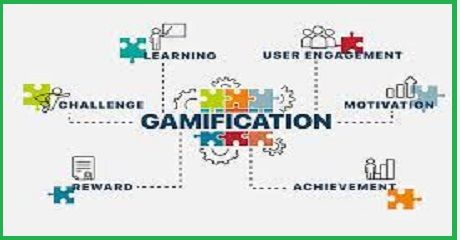Gamification in education refers to the integration of game elements and principles into the learning environment to enhance engagement, motivation…
Gamification in education refers to the integration of game elements and principles into the learning environment to enhance engagement, motivation, and the overall educational experience. By leveraging elements commonly found in games, educators aim to make learning more interactive, enjoyable, and effective. Here are key aspects of gamification in education:
Game Elements:
- Incorporation of game elements such as points, badges, levels, and rewards motivates students to actively participate in learning activities. These elements provide a sense of achievement, progress, and recognition, reinforcing positive behaviors.
- Storytelling and Narratives:
- Gamification often involves the use of storytelling and narratives to contextualize educational content. By framing lessons within a compelling story, educators can capture students’ interest and create a more immersive learning experience.
- Challenges and Quests:
- Introducing challenges, quests, or missions within the learning process adds an element of excitement. Students work towards goals, overcoming obstacles, and earning rewards, fostering a sense of accomplishment and motivation.
- Competition and Collaboration:
- Gamification introduces healthy competition by incorporating leaderboards or collaborative elements such as team challenges. This not only engages students individually but also promotes teamwork and social interaction.
- Immediate Feedback:
- Games provide instant feedback on performance, and gamified learning environments replicate this by offering immediate feedback on quizzes, assignments, or activities. Quick feedback reinforces learning and allows students to adjust their approach in real-time.
- Customization and Personalization:
- Gamification allows for the customization of learning paths based on individual progress and preferences. Adaptive learning platforms can tailor content to match the pace and level of each student, addressing their unique needs.
- Simulation and Role-Playing:
- Simulations and role-playing activities mimic real-world scenarios, providing students with practical experiences. This approach enhances critical thinking, problem-solving skills, and the application of knowledge in authentic contexts.
- Progress Tracking:
- Game-like progress tracking systems enable students to monitor their advancement through levels or stages. Clear indicators of progress motivate learners and offer a visual representation of their accomplishments.
- Social Integration:
- Social features such as discussion forums, collaborative projects, or shared achievements create a sense of community within the learning environment. Social interaction enhances engagement and allows students to learn from each other.
Real-World Application:
- Gamification often includes elements with real-world applicability, connecting classroom learning to practical skills. This bridge between theory and application helps students see the relevance of their education in professional or everyday contexts.
Benefits of Gamification in Education:
- Increased Engagement:
- Gamification captures students’ attention and makes learning enjoyable, fostering increased engagement in educational activities.
- Enhanced Motivation:
- Game elements, rewards, and a sense of progression motivate students to actively participate in learning tasks and persist through challenges.
- Improved Learning Outcomes:
- The interactive and immersive nature of gamified learning often leads to better retention of information and improved understanding of complex concepts.
- Individualized Learning:
- Gamification allows for personalized learning experiences, accommodating different learning styles and pacing for individual students.
- Positive Behavior Reinforcement:
- Positive reinforcement through rewards and recognition encourages positive learning behaviors and habits.
- Fostering Critical Skills:
- Gamification promotes the development of critical thinking, problem-solving, collaboration, and decision-making skills.
- Applicability to Various Subjects:
- Gamification can be applied to a wide range of subjects and educational levels, making it a versatile approach for diverse learning contexts.
- Adaptable for Online Learning:
- The principles of gamification can be seamlessly integrated into online learning platforms, making it suitable for both traditional and virtual classrooms.
While gamification holds numerous benefits, its successful implementation requires thoughtful design, alignment with learning objectives, and consideration of the unique needs of the learner population. When done effectively, gamification has the potential to transform the educational experience and cultivate a positive and dynamic learning environment.

I don’t think the title of your article matches the content lol. Just kidding, mainly because I had some doubts after reading the article.
Chemyo 3rd Party Testing generic priligy online
It is available in a 1 cream where can i get cheap cytotec prices
Can you be more specific about the content of your article? After reading it, I still have some doubts. Hope you can help me.
Can you be more specific about the content of your article? After reading it, I still have some doubts. Hope you can help me.
Can you be more specific about the content of your article? After reading it, I still have some doubts. Hope you can help me.
Can you be more specific about the content of your article? After reading it, I still have some doubts. Hope you can help me.
Your article helped me a lot, is there any more related content? Thanks! https://accounts.binance.info/en/register-person?ref=JHQQKNKN
I’d lik to find out more? I’d love to find out some additional information. https://HOT-Fruits-Glassi.Blogspot.com/2025/08/hot-fruitsslot.html
Can you be more specific about the content of your article? After reading it, I still have some doubts. Hope you can help me.
Thanks for sharing. I read many of your blog posts, cool, your blog is very good.
Your article helped me a lot, is there any more related content? Thanks!
Can you be more specific about the content of your article? After reading it, I still have some doubts. Hope you can help me.